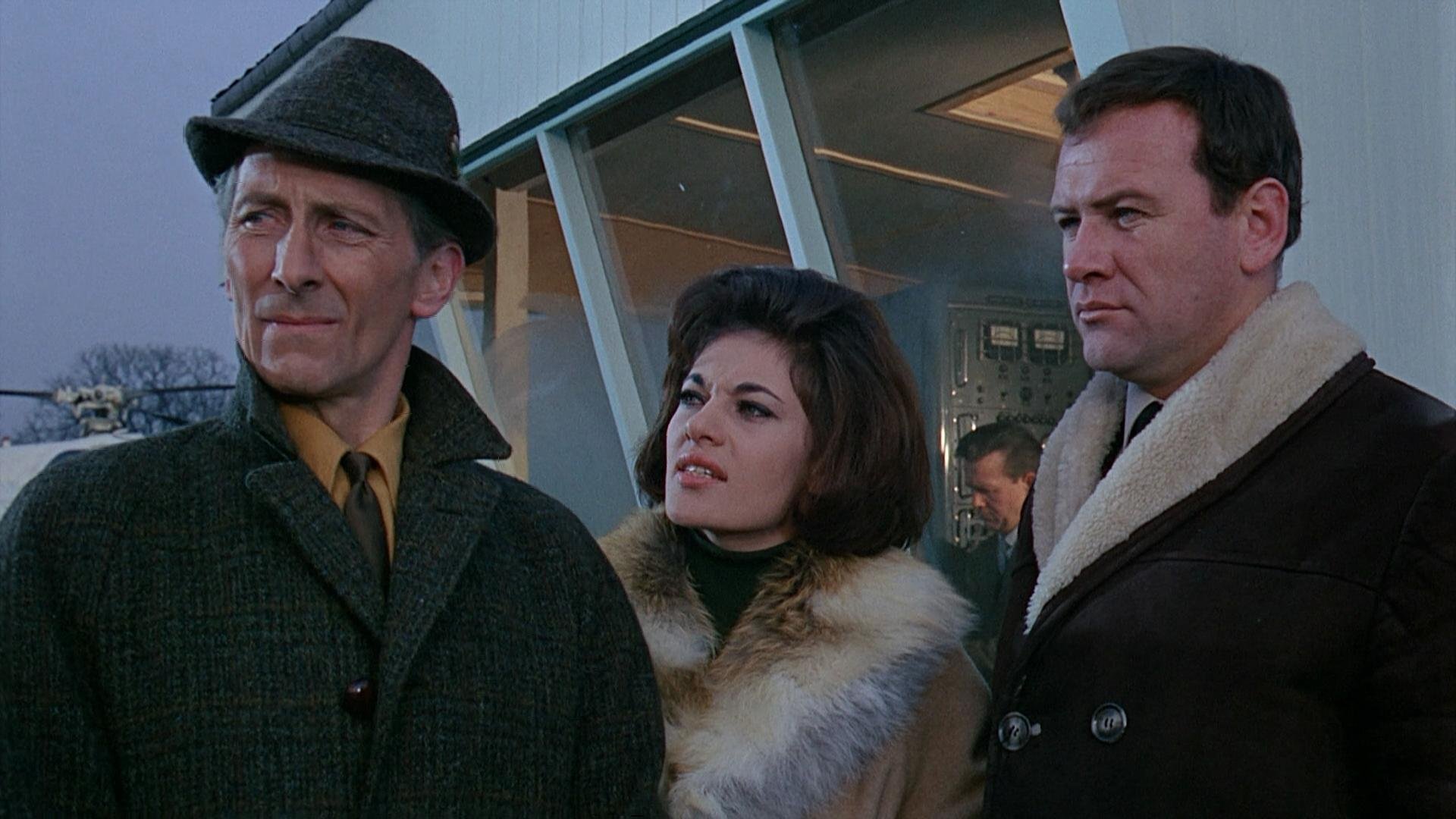
Island Of Terror (1965)
“His body is all like jelly - it's like nothing I've ever seen. There was no face - just a horrible mush with eyes sitting in it!”
We've all seen those adverts on TV in the middle of the afternoon for the Cancer Research Society - you know the ones - "Who can see a time when we've beaten cancer? We can." Of course, what they're failing to tell us is that when this happy time comes about, we won't be celebrating - oh no, we'll be cowering in fear from an onslaught of bone-eating carpets.
That's the premise of Island Of Terror - a great little sci fi horror in the best tradition of "science runs amok on a small British island" flicks (see also The Deadly Bees, Night Of The Big Heat, etc). In fact, I'm going to go out on a limb here and state for the record that Island Of Terror is one of the best of this mini-genre, if not the best. It's got everything - nasty effects, Peter Cushing, a fast-moving plot, and the greatest radioactive cow massacre you've ever not seen.
As already mentioned, there's a group of scientists hard at work off the British mainland, looking for a cure for cancer. Unfortunately, something goes wrong in their laboratory, and it's not long before a duffel coat wearing chap goes to investigate a strange sound emanating from a nearby cave and dies horribly (well, it sounds horrible).
The local bobby comes across the unfortunate man's body, and after much mugging into the camera, pokes it with his truncheon. It's gone soft.
He rushes to tell the local doctor about his find, explaining: "His body is all like jelly - it's like nothing I've ever seen. There was no face - just a horrible mush with eyes sitting in it!"
The doctor goes to have a gander at this - his prognosis? The man's had his bones sucked out, probably due to some disease. He gets in touch with his mate Dr Brian Stanley (Cushing), a pathologist, who in turn brings in his friend - bone expert David West (the ever dependable, and always angry, Edward Judd). Stanley, West and West's latest girl Toni take her dad's helicopter and fly to the island (the helicopter must have cost the film makers a fortune - it gets a lot of time on-screen).
Once on the island, we get our first look at the boneless body - which is reasonably effective, although nowhere near as gruesome as the policeman's enthusiastic description would have had us believe. After much fannying about with microscopes, Stanley and West decide they need better facilities, so make their way to the laboratory seen at the beginning of the film (oh-oh).
Once there they discover more bodies, but still don't know what's causing them. And now local farmers are finding their fields strewn with deflated horses. As one islander puts it: "There's some peculiar goings-on going on on this island…"
Finally, Toni gets attacked by something as she sits in a car, but slightly unhelpfully, she can only describe it as "grey-ish".
Luckily, all of a sudden everyone's talking about "all those things running around," which is a bit rich considering no-one's actually seen them properly and lived yet.
Back at the lab, our heroes finally get to see what they're up against - a bunch of slithering carpets with periscopes sticking out of the front of them. Hitting them with an axe is a bad idea (as the unfortunate village doctor discovers to his cost) and they realise that once they have fed on the bones of their victims, these "silicates" become inactive and then split into two. Although this gives the rest of the gang chance to escape, it does pose another problem - within a week there'll be over a million of the things on the island.
After discovering that guns, petrol bombs and dynamite don't work on the pesky things, it's finally made clear that radiation will work (hurrah for Strontium 90!) - the only problem is, how do they get enough radiation into the silicates? Why, by irradiating an entire herd of cows and sending them to be eaten, of course.
In one of the most amazing scenes in 60s sci fi horror, we see Judd injecting cow after cow with deadly radiation, and the islanders packing the herd off towards the advancing silicates. The entire massacre is then relayed to us by a bored-looking Stanley and two villagers, who watch it through binoculars (we don't actually get to see it ourselves, they'd obviously overspent on that helicopter at the beginning):
"Well, this is it."
"It's a nightmare."
"It's all over."
But as the silicates continue to advance on the villagers, will the radiation work in time? And just what was Stanley going to do to Toni with that syringe?
Island Of Terror has a fantastic ending (despite the budget-saving off-screen cow massacre) which is genuinely exciting. Despite their looks, the silicates are extremely menacing - after all, they actually manage to severely disable Peter Cushing, so they must be capable of anything! And it's refreshing to see a 1960s science fiction film in which radiation isn't the menace, but the cure.
